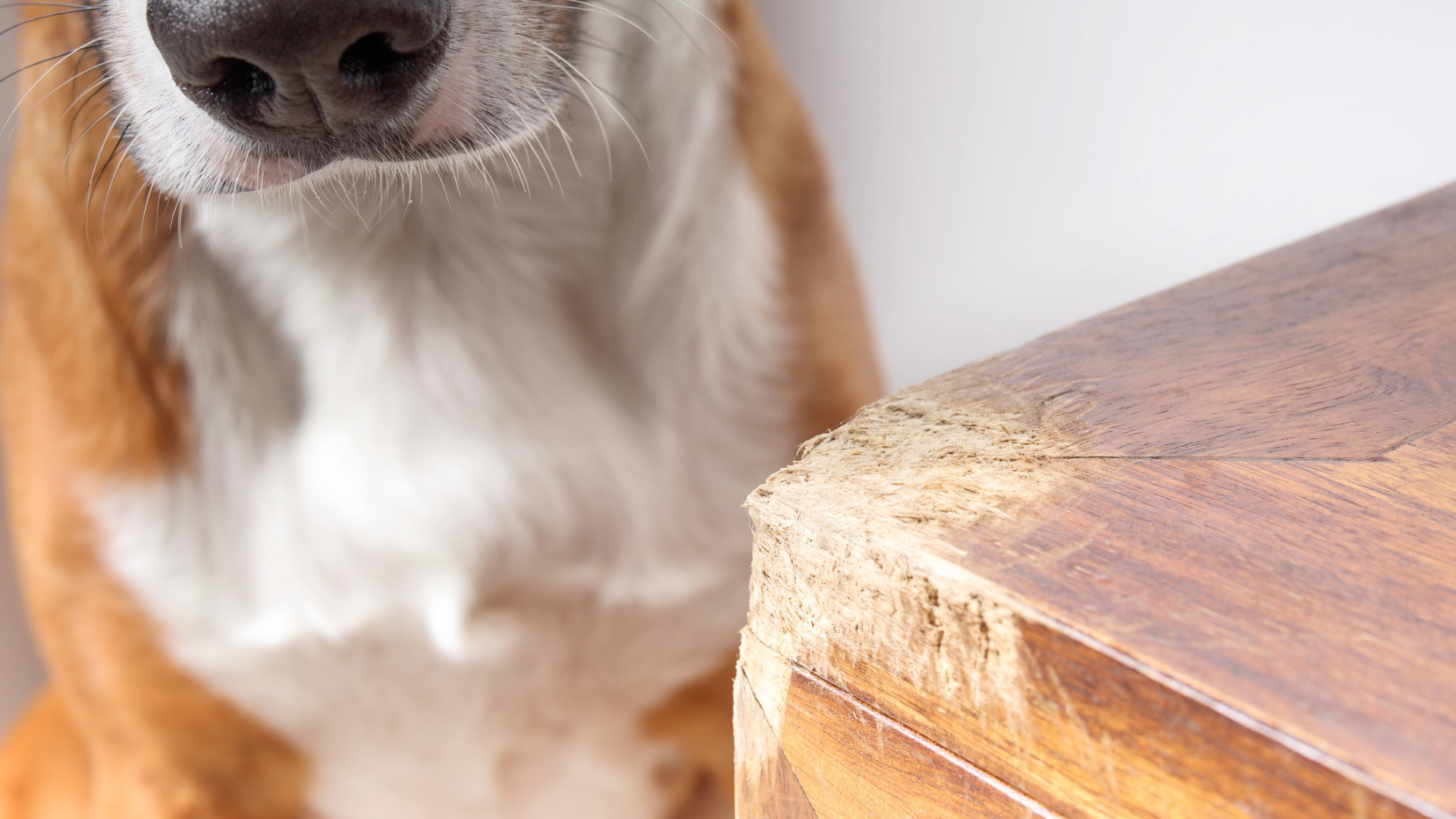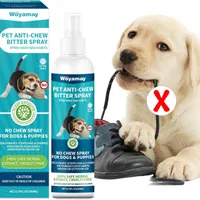How to stop a dog from chewing on wood: Vet’s guide
Our vet explains how to stop a dog from chewing on wood

How to stop a dog from chewing on wood is a question I’m asked regularly in consultations – particularly by frustrated pet parents whose dogs have taken a liking to furniture legs, skirting boards, or even trees in the garden.
Chewing is a natural behavior for dogs, but when it’s directed at inappropriate items, it can be destructive and even dangerous. As a vet working in general practice, I’ve seen firsthand the complications that can arise from this habit – from splinters lodged in gums to serious gastrointestinal obstructions.
Below, I’ll guide you through why dogs chew on wood, what you can do to stop it, and whether popular methods like vinegar are truly safe and effective. I’ll also explain why punishment isn’t the answer and what to do instead. My advice is based on clinical experience, behavioral science, and what actually works in real homes with real dogs.
If you're looking for safe alternatives to satisfy your dog’s chewing instincts, I highly recommend checking out our best long-lasting dog chews guide. It’s packed with vet-approved options that can keep your pup busy and your furniture intact.
How to stop a dog from chewing on wood furniture
The first step in stopping your dog from chewing wood furniture is to figure out why they’re doing it. Are they bored? Teething? Anxious? Once you understand the cause, you can tailor your approach.
Start by removing temptation. Block access to particularly chewed spots with furniture rearrangement or safe baby gates, especially when you’re not supervising. Apply dog-safe deterrent sprays to areas that can’t be moved – these usually have a bitter or citrusy taste that dogs find off-putting.
At the same time, redirect the chewing behavior. Provide appropriate chew toys and encourage your dog to use them. When you see them chewing the right thing, praise them immediately and offer a treat – this builds positive reinforcement for desirable behavior.
Get the best advice, tips and top tech for your beloved Pets
Be sure your dog’s getting enough physical and mental stimulation. A tired dog is far less likely to chew destructively. Interactive toys, regular walks, training sessions, and games like hide and seek can make a huge difference.
Woyamay Anti Chew Spray for Dogs | Amazon
The Woyamay Anti-Chew Spray for Dogs is a natural, alcohol-free bitter apple spray that helps deter dogs from chewing or licking furniture, shoes, bandages, and more. It is safe for pets and surfaces and suitable for indoor and outdoor use.

Why do dogs chew on wood?
Dogs chew for a variety of reasons, and not all of them are behavioral problems. Puppies chew when they’re teething to relieve discomfort, just like human babies. Adult dogs may chew to explore their environment, relieve boredom, or cope with stress and anxiety.
Chewing can also become a learned behavior. If your dog once got your attention by chewing a table leg, they might continue to do it, even if that attention was negative. Some dogs also enjoy the texture or taste of wood, especially if it’s from the garden and has been weathered or carries the scent of animals.
In rarer cases, chewing may be linked to a medical condition such as gastrointestinal upset, dental issues, or a nutritional deficiency. If your dog’s chewing seems excessive or is accompanied by other symptoms like vomiting, diarrhea, or weight loss, it’s worth booking a vet check to rule out any underlying issues.

Does vinegar stop dogs from chewing wood?
White vinegar is sometimes suggested as a homemade deterrent to stop dogs from chewing on wood. The strong smell and sour taste may be enough to put some dogs off. However, this method isn’t always reliable, and for some dogs, it can actually be irritating.
Vinegar is generally safe when used in small quantities and diluted (typically one part vinegar to two parts water). But be careful. Spraying strong vinegar solutions on porous wood can damage the finish, and some dogs may react to the smell with sneezing or avoidance of the whole area, which may not be ideal if it’s somewhere they normally rest or eat.
From a veterinary perspective, I’d suggest trying purpose-made deterrent sprays first. These are specifically formulated to be safe and effective, and they’re much more palatable (or rather, unpalatable!) to dogs.
If you do decide to try vinegar, always patch test on a small, hidden part of the furniture first and observe your dog’s reaction closely.

Should you punish a dog for chewing on furniture?
It’s important not to punish your dog for chewing on furniture, even if it feels like the obvious response in the moment. Dogs don’t understand punishment in the way we do. If you scold them after the fact, they won’t connect the reprimand with the chewing and may just become confused or anxious.
Even if you catch them in the act, harsh punishment can damage your bond and increase stress, which can worsen destructive behavior. Instead, focus on positive reinforcement. Praise and reward them when they choose appropriate items to chew. Redirect them gently if they start chewing on the wrong thing.
If you need guidance on how to use rewards-based training effectively, you can read up on positive reinforcement for dogs.
Chewing is a normal, healthy activity for dogs, but when they start gnawing on your furniture or garden fencing, it becomes a problem. Understanding the underlying cause is key to resolving it. With patience, consistency, and the right tools, you can teach your dog what’s appropriate to chew and protect your home in the process.
The best way to start is with behavior redirection and environmental management, using safe deterrents and plenty of positive reinforcement. And remember – it’s always worth checking with your vet if the chewing is excessive or seems out of character, to rule out any health concerns.
Read next: Safe dog chews for aggressive chewers and best durable dog toys. Or, why is my dog chewing rocks?

Emma graduated from the Royal Vet College in London in 2011. She has a keen interest in surgery and went on to do a postgraduate certificate in small animal surgery and was then awarded advanced practitioner status in the same discipline.
Edited by Megan Milstead.
This page was last updated in June 2025 by Emma Chandley.
Emma Chandley is a vet with 14 years of experience and has a keen interest in surgery. After graduating from the Royal Vet College in London in 2011, she achieved a postgraduate certificate in small animal surgery from the British Small Animal Veterinary Association and Nottingham Trent University. She was then awarded advanced practitioner status in the same discipline by The Royal College of Veterinary Surgeons. She has a black Labrador and two pygmy goats at home.

